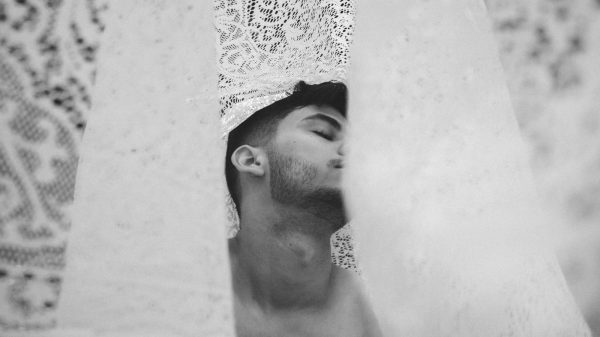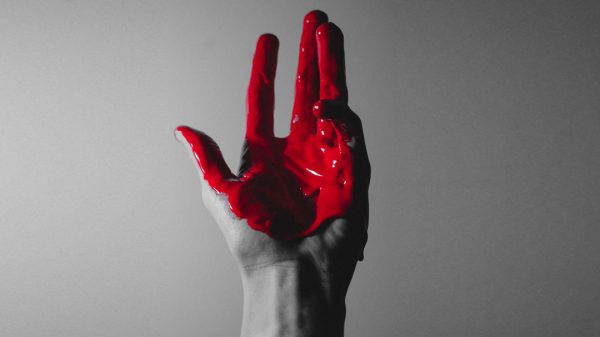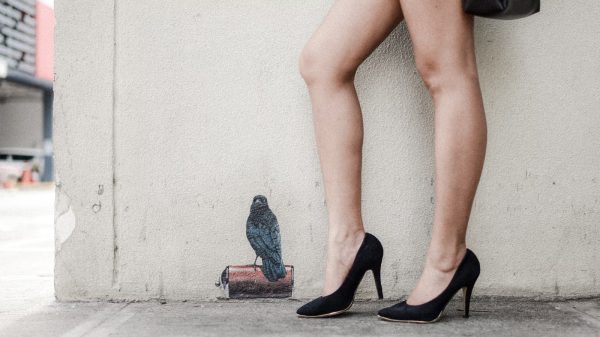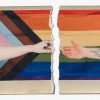Cover your eyes (or ears) Pride virgins or would-be Pride virgins; you may not want to see (or hear) this. That Pride – that moment when everything LGBT is highlighted, if not “celebrated” – can actually be used as a tool to oppress the very people it is supposed to celebrate.
I had this discussion just a few minutes ago, when a friend asked me about who we are doing Pride for.
I’ve asked this question for many years now, I said, considering the way the LGBT community celebrates (the annual) Pride: Are we doing this for “them” (non-LGBT people) to like us, or are we doing this to empower the LGBT community?
Of course, the apt response ought to be: BOTH, dummy!
But in reality, our approach/es are so skewered we seem to be more worried with “pleasing” the non-LGBT community with our Pride, than we are with using this as a way to uplift our LGBT brothers and sisters.
I suppose the oppression can be best seen in “priorities” in Pride “celebrations”/events.
Start with the power of corporate sponsors.
“But they fund the event,” my friend said. Sans that fund, Pride may not happen at all.
If by Pride we mean the festivities, then yes, we need the moolah. You think gay wizard Dumbeldore made those posters appear out of thin air? But if we mean we need that same anetch for our Pride in being LGBT, then… we seriously have to rethink our concept of Pride.
Don’t get me wrong here – I’d be the first to tell you that ALL KINDS OF SUPPORT MATTER. In this case, if well-moneyed bodies are willing to cough up what, for them, is spare change to support worthy causes, then that support should be welcomed.
BUT there are two things worth (bluntly) considering here:
- The corporate sponsors aren’t doing this solely out of the goodness of their hearts; they’re doing this with an expectation of getting the expenses back one way or another (e.g. media mileage, PR strategy, et cetera). Note that a one-page ad in a nationally circulated newspaper could cost them over P100,000.00 PER DAY; but bv supporting one Pride event, they end up just giving – what? – a quarter of that for an entire month of being promoted for their “goodness”. It’s a win for them all around. And if LGBT community and/or event organizers can’t see this, we have a HUGE problem…
This – then – leads to the second point, being… - If corporate sponsors – because they gave such-and-such amount of money – end up actually dictating the order of, say, the parade; of who will speak at the program/s; et cetera, then we have another HUGE problem. Because then – to be very, very frank – this just proves that they’ve truly already bought Pride.
And this is the sad part here, when Pride ceases to be for the LGBT community by the LGBT community. When it becomes as just another advertising/money-making machine…
Next up is the representation in Pride itself.
Did you know that New York City has NUMEROUS Pride events? When I was there for a while in 2014, I was told by a number of LGBT activists that the one in Manhattan (the “big one”) is considered the “business Pride”. No, dearie, it doesn’t mean it’s the Pride for LGBT people in the business community; instead, it’s the one backed by money, so it doesn’t necessarily represent the LGBT community but the interests of the moneyed.
This is why, I was told, the Manhattan LGBT Pride parade is – not surprisingly – full of the now-stereotyped gay representations of “young, able-bodied, middle class/elite, White gay men”. You see them in TV, films and magazines; they’re the “clean” versions of us, the “desirable” versions of members of the LGBT community.
But if you want to see the “others” from the LGBT community (e.g. people of color, the homeless, people living with HIV), you’d have to go to the smaller Pride events in, say, Brooklyn.
In Toronto (when the city hosted the World Pride a few years back), no one I spoke with while I was there pretended to me that the “big LGBT parade” was for everyone.
“It’s a ‘parade’ – all for show,” one lesbian leader said to me (she was with me at an international human rights conference preceding the parade).
This “show” was an extremely well-funded event; heck, it was even “sold” at that time as a money-making event/tourist attraction for the city.
But exactly because it was recognized as a money-earning scheme, Toronto “broke” Pride, so it had a trans march, dyke march, et cetera. These were the political “moves”/events (again because the parade was just for show) that eyed to advance the LGBT cause.
And in the Philippines? Think of this: When was the last time you saw an LGBT Filipino with mobility issues join Pride?
The representation is – obviously – linked with the “editing out” of the “unwanted” from within the LGBT community, and – this is perhaps the most disappointing part – by the “leaders” of the LGBT community themselves.
In Taiwan, there were sex workers who are also LGBT community members who complained to me about being edited out of the so-called biggest Pride in Asia. Their issues, they deemed, were considered “less important than the more mainstream same-sex marriage discussions”. So a politician wooing the LGBT vote was given a chance to talk; while LGBT people who had a valid issue were left out.
In Singapore, I spoke with a head of an NGO who renders services for sex workers, prostituted LGBT people and trafficked men and women. She claimed that the city-state’s largest LGBT gathering would only allow her to speak if “I did not mention the word ‘sex’ at all as it offends the sponsors”. She ended up not talking; for how can she speak of what her NGO does sans the ‘sex’ word?
And in Metro Manila, a politician can get the mic to talk about the anti-LGBT policies of the existing administration… without mentioning that the same politician belonged to a political party that allied with a bigger political party that also failed (big time) to advance pro-LGBT policies and for a longer period of time prior to the current administration.
There’s the “sanitizing” of the LGBT community, too.
I’ve attended one Pride in QC where the organizers actually prevented gay men from walking topless because “people will think we’re sex maniacs”. Yeah… because sex is so bad we don’t want to be associated with it (LOL!).
And again, there’s that editing in Singapore…
But perhaps the biggest way Pride could be oppressive is when it is just seen as a one-day thing. When we are able to spend a lot of money to have a half-day walk around a block, and yet not be able to come up with even a quarter of that same amount to: 1. Help finance homeless senior LGBT people who live in the streets; 2. Come up with a version of the proposed anti-discrimination bill in Filipino Sign Language so our Deaf LGBT brothers and sisters also understand it; 3. Help support people living with HIV who are kicked out of their homes when family members found out about their HIV status; 4. Help trans Filipinos sue the ass off of institutions that prevent them from accessing services (e.g. education, private and public venues); 5. Help finance LGBT workers who did not only experience SOGIE-related discrimination in their workplaces, but were also eventually laid off their jobs because of abusive policies allowed by the State…
This is becoming a rant, you say?
Yes it can be called that.
But it’s also a challenge.
For Pride not to be seen as just a celebration. It is that, yes; it is that time when we rejoice because of what we’ve achieved thus far.
But it’s also a constant reminder that we’ve barely scratched the surface in our struggle for… everything LGBT.
So yes please, join the annual Pride “celebration” – whether the celebration is a parade or a march, just join. For some of us who are lucky enough, it’s that one time in a year when we can somehow gather.
But also remember to look at the essence of Pride: That at its very core (and particularly for so many members of the LGBT community who can’t even access it) Pride is a daily struggle. Because if we don’t, then Pride would have failed, it would have abetted our own oppression. And if this is so, then – paraphrasing what was eloquently stated in the flick Rapa Nui – “We’ve become who we sought to destroy.”
The founder of Outrage Magazine, Michael David dela Cruz Tan completed BA Communication Studies from University of Newcastle in NSW, Australia; and Master of Development Communication from the University of the Philippines-Open University. He grew up in Mindanao (particularly Kidapawan and Cotabato City), but he "really came out in Sydney" so that "I sort of know what it's like to be gay in a developing, and a developed world". Conversant in Filipino Sign Language, Mick can: photograph, do artworks with mixed media, write (DUH!), shoot flicks, community organize, facilitate, lecture, and research (with pioneering studies under his belt). He authored "Being LGBT in Asia: Philippines Country Report", and "Red Lives" that creatively retells stories from the local HIV community. Among others, Mick received the Catholic Mass Media Awards in 2006 for Best Investigative Journalism, and Art that Matters - Literature from Amnesty Int'l Philippines in 2020. Cross his path is the dare (guarantee: It won't be boring).



































































































